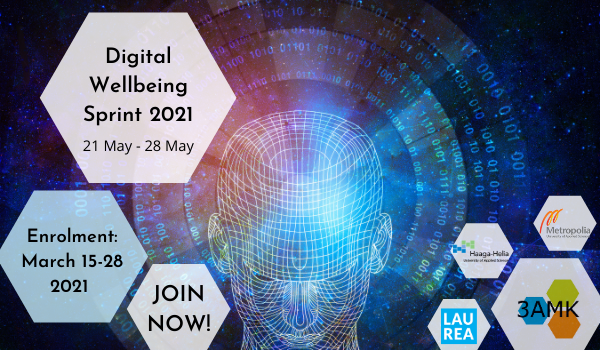On building rapport…and smiling
An exciting and busy Sprint week is now behind us and having had time to reflect on the proceedings I find myself returning to one particular aspect. Design sprints and co-creation workshops are often populated by people from diverse backgrounds, different pre-existing knowledge bases regarding the project and varying goals for the work being conducted. Thus it is important from early on to establish common ground and an atmosphere that supports the participation of the whole team.
How does one build rapport in practice then? A leisurely stroll around the World Wide Web produced some interesting points to consider. Tony Robbins, an international entrepreneur among other things, describes building rapport as the process of creating deeper relationships with others. In How to build Rapport in Business he lists four points as a guide to building rapport through communication
- Know yourself
Look inwards and discover who you are as a communicator as a cornerstone of building rapport. - Practice empathy
Empathy helps you engage more deeply. - Embrace new perspectives
Strive to understand other people, and you’ll be better able to meet their needs. - Master the steps of communication
Engage fully, by using both verbal and non-verbal communication to relay that you care and that you understand.
In How to build rapport in learning on-line sessions, author Kevin Babel (2020) also raises four points in his guide to establishing rapport: Awareness, Authenticity, Safe spaces and Camaraderie. Awareness as described by Babel involves seeing your audience and gauging their attention and level of energy. With authenticity Babel encourages the reader to be themselves when engaging with their audience, but a “somewhat ‘larger’ version” of themselves, to account for the fact that a virtual environment can have a diminishing effect. Safe spaces denote a non-judgemental environment, where frank discourse is encouraged and valued. And finally, camaraderie involves using exercises to actively promote team building.
In her piece titled Zoom Etiquette: How to Build Rapport Online Like a Pro Vanessa Van Edwards lists multiple techniques of which I will highlight a few here.
- Use a warm greeting when you begin to engage with your audience to dramatically increase rapport
- Always virtual wave, showing instead of hiding your hands can allow you gain trust
- Make sure to introduce yourself
- Give everyone a chance to talk by passing the turn
How do these points relate to the experience of a Design Sprint you might ask? Well, I feel that to better support a team as a facilitator one must fully engage with the work, even though one is not necessarily part of the team as an ideator or a decision-maker. Thus, as Robbins put it, we should look inwards to find ourselves and reflect on who we are as communicators in order to better engage with our teams. Babel and Van Edwards give valuable practical advice on how one is to be in the virtual settings that are so dominant today. For me, the standout points were made about creating a safe space for the group to be able to collaborate more fully and engaging warmly with the group from the very beginning, thus setting the tone for the work to be conducted. All the writers mentioned here draw attention to valuable points to consider for all participants of Design Sprints.
Personally, when participating in the next Design Sprint or engaging in another type of co-creative process with a multi-disciplinary team, I will be taking extra care that I “read the room” better right at the start. This will help me to offer help and guidance when appropriate, which I fell short of during this particular Sprint. So thanks to the Spouse Program Sprint team for their patience and above all hard work during our seven days together. Thanks also to the other teams for their fantastic ideas and final solutions, our partner companies for their active participation, our project manager Elena for keeping us on track and to my fellow tutors and the teachers involved in the Digital Wellbeing Sprint for their help and support. And to everyone for the laughs and smiles.
Oh yes. The smile. Remember to smile. In Psychology to Grin About: The Benefits of Smiling and Laughter the Psychology and Counseling News (2019) of The University of West Alabama say that when we smile, we’re more approachable, our bodies release good hormones, we relieve stress and we may even live longer. So, to facilitators and sprint participants alike: Be brave. Ask all the questions, even the obvious ones. Listen to your audience and team and hear what they are saying. Ask for and give help. Challenge each other. And remember to smile.
Viljami
https://www.tonyrobbins.com/business/building-rapport-in-business/
https://schoolofbabel.com/uncategorized/rapport-in-learning-on-line-sessions
https://www.scienceofpeople.com/zoom-etiquette/
https://online.uwa.edu/news/benefits-of-smiling-and-laughter/



